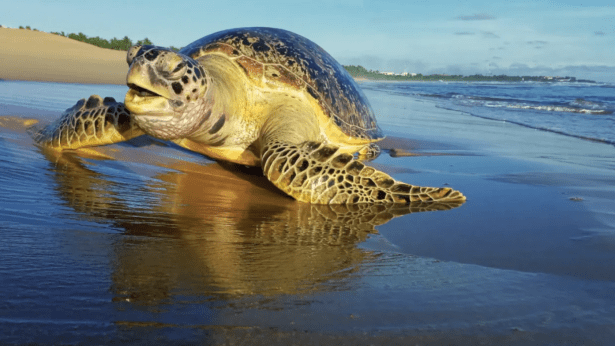Are forever chemicals harming ocean life?
By Max G. Levy | EcoWatch | August 25, 2020

Read the full article by Max G. Levy (EcoWatch)
“In seabird after seabird, Anna Robuck found something concerning: per- and polyfluoroalkyl substances, or PFAS, lurking around vital organs.
‘Brain, liver, kidney, lung, blood, heart,’ Robuck says, rattling off a few hiding spots before pausing to recall the rest. Robuck, a Ph.D. candidate in chemical oceanography at the University of Rhode Island, quickly settles on a simpler response: She found the chemicals everywhere she looked.
PFAS — a group of synthetic chemicals — are often called ‘forever chemicals’ due to their quasi-unbreakable molecular bonds and knack for accumulating in living organisms. That foreverness is less of a design flaw than a design feature: The stubborn, versatile molecules help weatherproof clothing; smother flames in firefighting foam; and withstand heat and grime on nonstick pans.
Through consumption and disposal, the chemicals seep into ecosystems and bodies, where they have been linked to cancers, pregnancy complications, and reproductive and immune dysfunction. Recent attention has focused on the prevalence of PFAS in drinking water.
‘Over the past 10-15 years we’ve really developed this super negative picture of what PFAS do to humans,’ Robuck says. ‘But we’ve barely scratched the surface of that in wildlife.’
One particular area of concern is the marine ecosystem. Long seen as a bottomless sink for pollutants, the ocean is a final stop for PFAS trickling into the ecosystem. Once in the ocean, PFAS can persist for decades or longer — and travel long distances. As a result, a growing body of scientific research suggests that marine wildlife are accumulating dangerous amounts of ‘forever chemicals.’
‘If we continue to emit PFAS, then the capacity of the ocean to dilute them is going to be exceeded,’ says Jamie DeWitt, an environmental toxicologist at Eastern Carolina University. ‘For all we know, oceans could be reservoirs that re-pollute the land…'”
This content provided by the PFAS Project.
Location:
Topics: